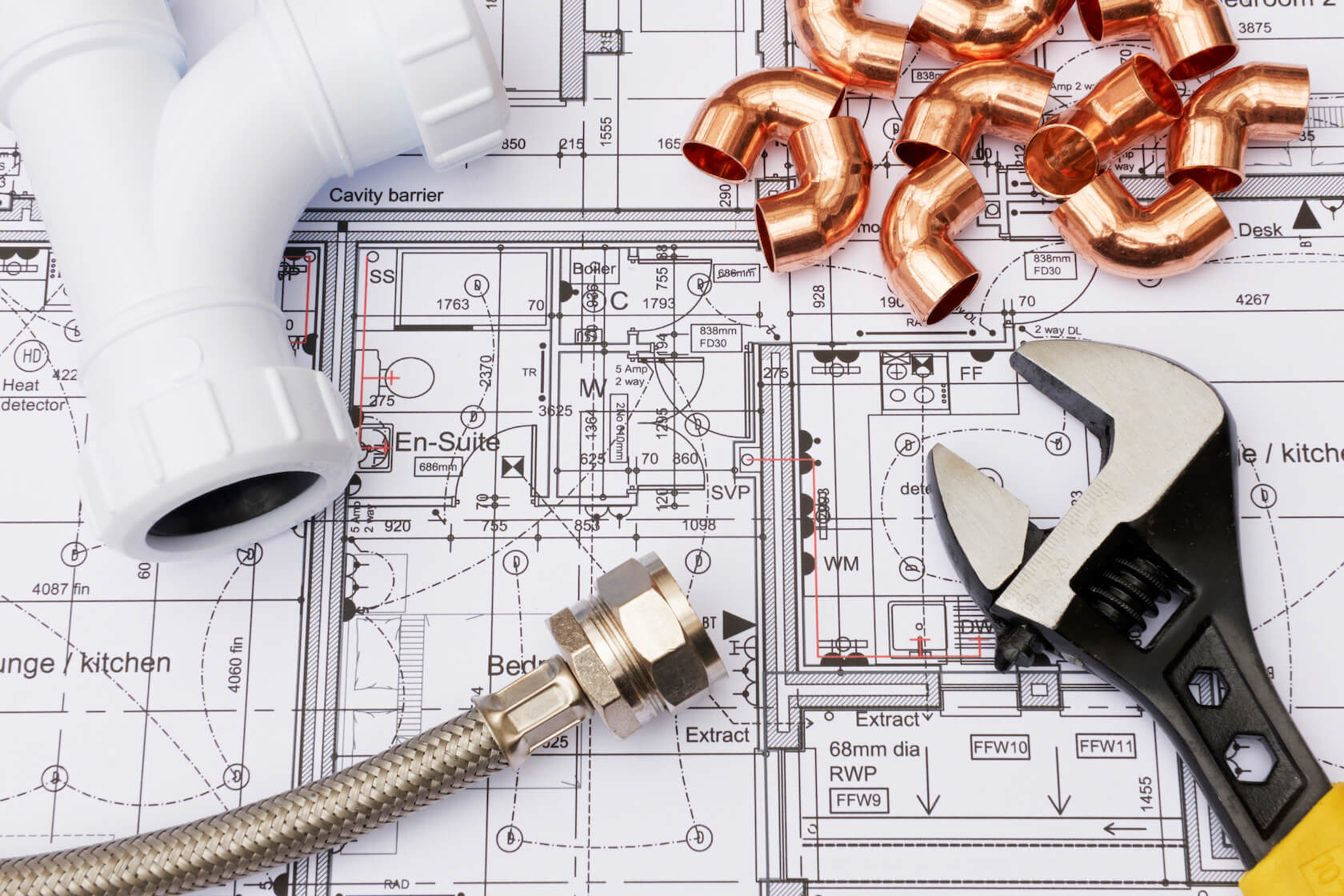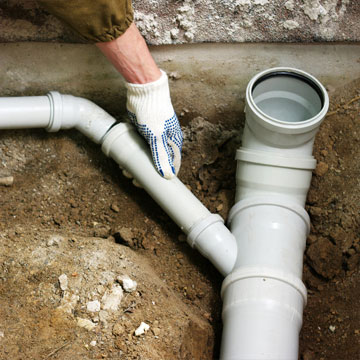The Core Elements of Your Property's Plumbing System
The Core Elements of Your Property's Plumbing System
Blog Article
The article on the next paragraphs involving Plumbing Installation 101: All You Need to Know is exceptionally insightful. Check it out for your own benefit and figure out what you think of it.

Recognizing how your home's plumbing system functions is essential for each house owner. From delivering tidy water for alcohol consumption, cooking, and bathing to safely eliminating wastewater, a properly maintained pipes system is critical for your family's health and wellness and comfort. In this thorough guide, we'll check out the detailed network that composes your home's plumbing and offer pointers on upkeep, upgrades, and handling common problems.
Intro
Your home's pipes system is more than just a network of pipelines; it's a complicated system that guarantees you have accessibility to clean water and effective wastewater elimination. Understanding its parts and just how they work together can assist you stop expensive repair services and make sure whatever runs smoothly.
Basic Parts of a Pipes System
Pipelines and Tubes
At the heart of your pipes system are the pipelines and tubing that carry water throughout your home. These can be made of various materials such as copper, PVC, or PEX, each with its advantages in terms of toughness and cost-effectiveness.
Components: Sinks, Toilets, Showers, and so on.
Components like sinks, commodes, showers, and bath tubs are where water is made use of in your house. Recognizing exactly how these fixtures link to the plumbing system assists in identifying issues and preparing upgrades.
Shutoffs and Shut-off Factors
Valves manage the flow of water in your plumbing system. Shut-off valves are essential during emergencies or when you need to make repairs, allowing you to isolate parts of the system without disrupting water circulation to the entire home.
Supply Of Water System
Main Water Line
The main water line connects your home to the municipal water supply or an exclusive well. It's where water enters your home and is distributed to different fixtures.
Water Meter and Pressure Regulator
The water meter actions your water use, while a stress regulator guarantees that water flows at a secure stress throughout your home's pipes system, avoiding damage to pipes and components.
Cold Water vs. Warm water Lines
Comprehending the distinction in between cold water lines, which provide water directly from the main, and hot water lines, which bring heated water from the hot water heater, aids in fixing and preparing for upgrades.
Water drainage System
Drain Pipes and Traps
Drain pipelines carry wastewater away from sinks, showers, and commodes to the drain or septic tank. Catches avoid sewer gases from entering your home and additionally trap debris that can trigger clogs.
Air flow Pipes
Ventilation pipes allow air into the drainage system, stopping suction that might slow water drainage and trigger traps to empty. Correct air flow is important for keeping the integrity of your pipes system.
Value of Proper Water Drainage
Making sure proper water drainage avoids back-ups and water damage. Routinely cleaning up drains and keeping traps can prevent costly fixings and extend the life of your pipes system.
Water Heating System
Sorts Of Water Heaters
Hot water heater can be tankless or traditional tank-style. Tankless heating systems heat water as needed, while tanks keep warmed water for instant usage.
How Water Heaters Link to the Plumbing System
Comprehending just how water heaters attach to both the cold water supply and hot water distribution lines assists in detecting problems like not enough hot water or leakages.
Upkeep Tips for Water Heaters
Routinely flushing your hot water heater to remove sediment, examining the temperature settings, and evaluating for leakages can expand its life expectancy and enhance power efficiency.
Typical Pipes Issues
Leaks and Their Reasons
Leakages can occur because of maturing pipes, loose installations, or high water stress. Addressing leaks immediately stops water damages and mold growth.
Blockages and Clogs
Obstructions in drains and toilets are commonly brought on by flushing non-flushable items or an accumulation of oil and hair. Making use of drainpipe screens and being mindful of what decreases your drains pipes can stop obstructions.
Signs of Plumbing Problems to Look For
Low tide stress, slow-moving drains pipes, foul odors, or unusually high water bills are signs of prospective plumbing issues that must be resolved without delay.
Pipes Upkeep Tips
Regular Examinations and Checks
Set up yearly pipes inspections to catch issues early. Look for signs of leaks, corrosion, or mineral buildup in taps and showerheads.
DIY Upkeep Tasks
Simple tasks like cleansing tap aerators, looking for commode leakages utilizing dye tablets, or insulating exposed pipes in cool environments can protect against significant pipes problems.
When to Call an Expert Plumber
Know when a plumbing concern needs expert competence. Attempting complex repairs without correct knowledge can lead to more damages and greater repair service costs.
Updating Your Pipes System
Reasons for Upgrading
Updating to water-efficient components or replacing old pipes can boost water top quality, minimize water expenses, and increase the worth of your home.
Modern Pipes Technologies and Their Benefits
Explore technologies like wise leak detectors, water-saving bathrooms, and energy-efficient hot water heater that can conserve money and reduce ecological effect.
Expense Considerations and ROI
Compute the in advance costs versus lasting financial savings when thinking about plumbing upgrades. Several upgrades pay for themselves through lowered energy bills and less repair services.
Environmental Influence and Preservation
Water-Saving Fixtures and Devices
Installing low-flow taps, showerheads, and bathrooms can significantly minimize water use without compromising performance.
Tips for Lowering Water Usage
Straightforward routines like repairing leakages quickly, taking much shorter showers, and running full lots of laundry and dishes can save water and reduced your utility costs.
Eco-Friendly Plumbing Options
Take into consideration sustainable pipes materials like bamboo for floor covering, which is durable and eco-friendly, or recycled glass for kitchen counters.
Emergency situation Preparedness
Actions to Take During a Pipes Emergency
Know where your shut-off shutoffs are located and exactly how to turn off the water system in case of a ruptured pipe or significant leak.
Value of Having Emergency Get In Touches With Handy
Keep call information for neighborhood plumbings or emergency situation solutions easily offered for quick reaction throughout a plumbing dilemma.
Do It Yourself Emergency Fixes (When Suitable).
Temporary solutions like making use of duct tape to patch a dripping pipe or positioning a pail under a leaking tap can decrease damage up until a specialist plumbing shows up.
Final thought.
Recognizing the anatomy of your home's pipes system empowers you to maintain it efficiently, conserving money and time on repair work. By complying with routine upkeep regimens and staying notified concerning modern-day plumbing innovations, you can guarantee your pipes system runs efficiently for many years ahead.
Exploring Your Homes Plumbing Anatomy
Water Supply System
Main Water Line: This is where water enters your home from the municipal supply or a private well.
Water Meter: Typically located near where the main water line enters the property, it measures the amount of water used.
Shutoff Valve: It s crucial to know where this is in case of emergencies. It allows you to turn off the water supply to the entire house.
Pipes and Fittings: These distribute water throughout your home. Materials can include copper, PVC, or PEX.
Drain-Waste-Vent (DWV) System
Drains: Located in sinks, showers, and tubs, these carry wastewater away.
Traps: U-shaped pipes under sinks that hold standing water, blocking sewer gases from entering the home.
Vents: Pipes that lead from the DWV system to the outside, preventing vacuum formation and allowing gases to escape.
Sewer Line: Carries all wastewater from the home to the municipal sewer system or a septic tank.
Fixtures and Appliances
Sinks, Toilets, and Showers
Dishwashers and Washing Machines
Water Heaters
Maintenance Tips
Regularly check for leaks in exposed pipes and around fixtures.
Inspect the water heater annually for signs of wear.
Clean drains and traps to prevent clogs and odors.
Know how to shut off water to individual fixtures.
When to Call a Professional
Major leaks or burst pipes
Installation of new pipes or fixtures
Septic tank issues
Remodeling projects that involve plumbing changes
Conclusion
Understanding the anatomy of your home's plumbing is key to maintaining a functional and efficient system. Regular checks and knowing when to call in the experts can save you time, money, and stress.
https://www.mavyn.com/blog/exploring-your-homes-plumbing-anatomy

Exploring Your Homes Plumbing Anatomy
Water Supply System
Drain-Waste-Vent (DWV) System
Fixtures and Appliances
Maintenance Tips
When to Call a Professional
Conclusion
Understanding the anatomy of your home's plumbing is key to maintaining a functional and efficient system. Regular checks and knowing when to call in the experts can save you time, money, and stress.
https://www.mavyn.com/blog/exploring-your-homes-plumbing-anatomy
I have been very interested in Exploring Your Homes Plumbing Anatomy and I am assuming you appreciated our article. Do you know about someone else who is intrigued by ? Take a moment to share it. I treasure your readership.
Book Report this page